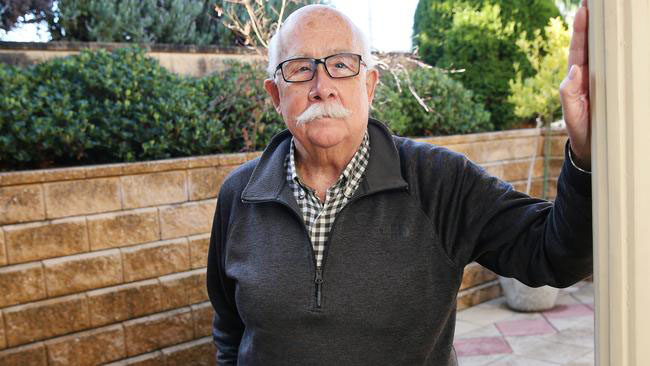Lance Strong shares Buruli ulcer story amid health warnings
 Spending time in the garden is suspected to have caused Lance Strong to develop an ulcer on his Achilles.
Spending time in the garden is suspected to have caused Lance Strong to develop an ulcer on his Achilles.
The Highton 75-year-old noticed what “started off as a small chafe” on the back of his heel around a year ago.
“It gradually got worse,” Mr Strong said.
His GP referred him to Barwon Health, and Mr Strong ended up being treated with surgery, antibiotics and steroids, and the wound required constant attention.
“It restricted my movement – I couldn’t walk far because of the location of the wound,” he said.
“It was quite painful.
“I can’t speak highly enough of Barwon Health … I had nurses coming to dress the wound every other day for probably two months.”
Mr Strong was forced to wear backless shoes up until recently, for about 12 months, due to the ulcer.
Infectious disease experts are warning people in Geelong and Bellarine communities to be aware of the signs and symptoms of Buruli ulcer this winter.
The skin disease is caused by Mycobacterium ulcerans.
Last year was Greater Geelong’s worst on record for cases of Mycobacterium ulcerans, with 47. Health department data shows Greater Geelong recorded eight cases so far this year, compared to seven over the same period in 2022.
The toxins made by the bacteria destroy skin cells, small blood vessels and the fat under the skin, which causes ulceration and skin loss.
Cases of Buruli ulcer have increased in Victoria in recent years, particularly along the Mornington and Bellarine peninsulas, and more recently along the Surf Coast and several suburbs of Greater Geelong, including Belmont, Highton, Wandana Heights, Newtown, Grovedale and Marshall.
The lesions are usually painless, and the ulcer generally gets bigger with time.
Not all Buruli ulcers appear as ‘ulcers’ – they can be nodules or red, painful swelling of limbs.
While transmission and infection usually occurs in the warmer months, due to the four to six month incubation period, cases present around now.
Associate Professor Daniel O’Brien, deputy director of the Barwon South West public health unit, said early diagnosis was vital in minimising severity.
“Whilst mosquito activity is reasonably low during the winter months, now is the time health professional begins to see patients present with ulcer symptoms,” he said.
“Early diagnosis of wounds is so important as it means that treatment can be initiated early, enabling quicker, more effective treatment resulting in less damage.”
Prof O’Brien encouraged anyone in the affected suburbs that noticed any non-healing wounds or lumps to see their GP.
Although the exact mechanism of infection in humans is still under investigation, research has shown that areas where humans are most frequently contracting Buruli ulcer are where soil, mosquitoes and possums are most frequently carrying the causative bacteria.
Mr Strong urged people to cover up while gardening.
Story and photo courtesy of Tamara McDonald/Geelong Advertiser.
